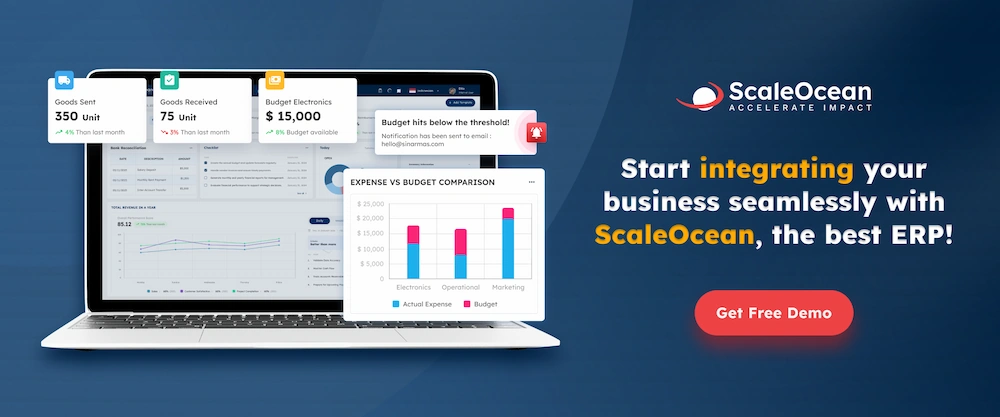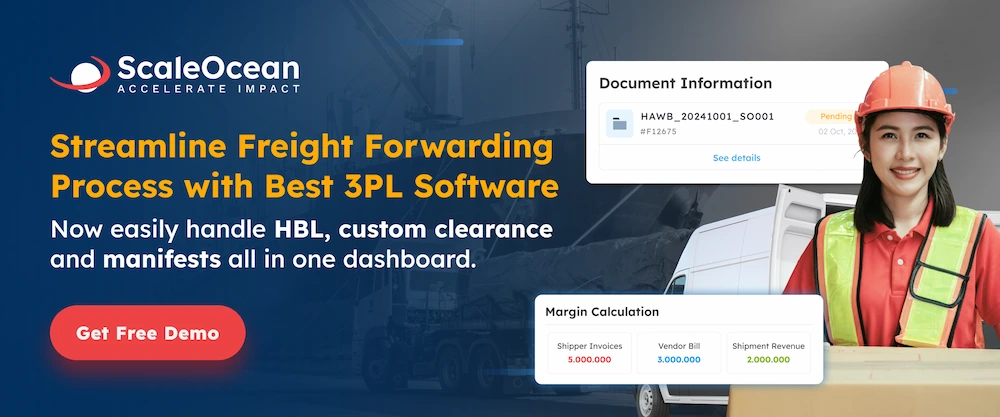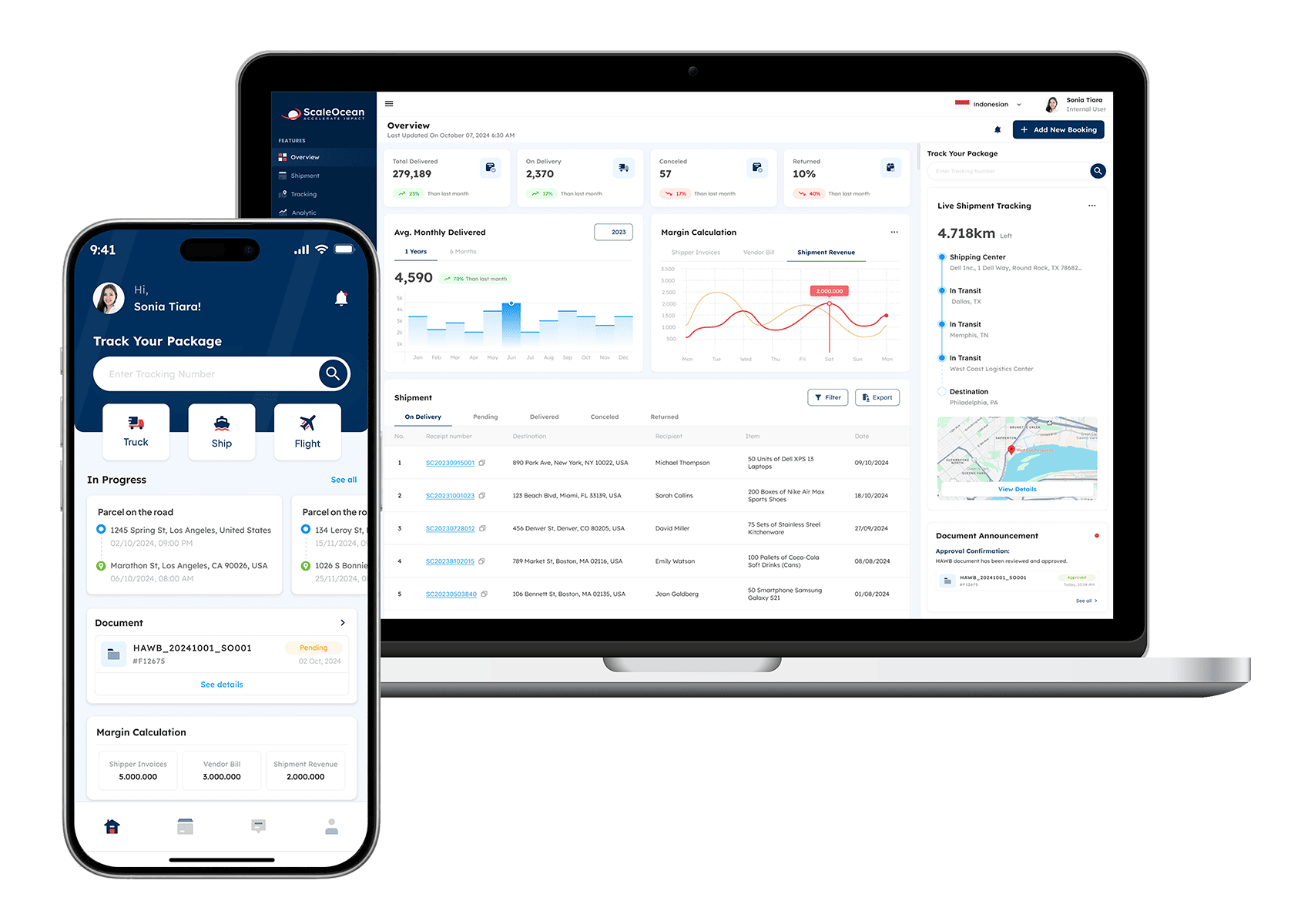As firms expand and globalize, maintaining a complicated supply chain becomes more difficult. Partnering with a third-party logistics (3PL) provider provides a solution by taking over critical logistics operations such as warehousing, shipping, order fulfillment, and inventory management. This enables firms to focus on their core activities while increasing supply chain efficiency. Businesses of all sizes in Singapore, a key global logistics hub, are increasingly relying on 3PL services to improve operational efficiency and fulfill rising customer demand.
Selecting the right 3PL supplier is critical to ensure seamless operations. With a diverse choice of companies offering specialized services across industries, organizations must carefully consider their own requirements. In Singapore’s competitive market, choosing the correct 3PL partner can have a substantial impact on a company’s efficiency, scalability, and capacity to compete both locally and globally.

1. What is 3PL (Third-Party Logistics)?
Third-party logistics (3PL) is the outsourcing of various supply chain operations to outside suppliers who specialize in logistics services. These companies handle critical operations like inbound, outbound, reverse logistics, and including inventory management, warehousing, order fulfillment, shipping, and returns processing. Companies that outsource these operations can focus on their primary business activities while benefiting from logistics professionals’ experience and efficiency.
To manage the intricacies of supply chain management, 3PL providers rely on advanced technology and established networks. This enables organizations to increase operational efficiency, cut expenses, and scale their operations without making substantial investments in logistics infrastructure. Understanding various logistics types helps businesses choose the right 3PL services to ensure speedier deliveries, optimize inventory, and improve overall customer satisfaction.
2. How Third-Party Logistics Work
A 3PL arrangement allows businesses to outsource supply chain functions such as warehousing, order fulfillment, and transportation to an external partner. This collaboration enables organizations to scale operations efficiently without requiring major investments in infrastructure or logistics expertise. For example, an e-commerce company can hire a third-party logistics service to handle inventory storage, picking and packaging, and direct shipping to customers.
According to Indeed, logistics operations positions are critical in a 3PL system because they help manage the complicated procedures involved, ranging from inventory control to shipping coordination. 3PL companies connect their systems with client operations, using advanced technology such as Warehouse Management Systems (WMS) and Transportation Management Systems (TMS) to streamline workflows. This integration enables real-time inventory tracking, automatic order fulfillment, and optimum delivery, resulting in increased productivity, lower costs, and more customer satisfaction.
3. The Growth of 3PLs
Globalization, e-commerce expansion, and increased consumer expectations for fast and dependable delivery have all contributed to the rapid growth of the 3PL business in recent decades. Businesses are increasingly relying on 3PL providers to streamline operations, cut costs, and boost supply chain efficiency. As marketplaces become increasingly interconnected, businesses must implement scalable logistics systems to successfully manage cross-border trade and variable demand.
Technological developments have also contributed significantly to this rise. Real-time tracking, supply chain visibility tools, and automated inventory management systems have improved 3PL capabilities, enabling organizations to optimize logistics more precisely. The emergence of data-driven decision-making and AI-powered logistics solutions adds to the appeal of 3PL services, making them essential for businesses seeking agility and competitiveness in a fast changing market.
4. Why Do Businesses Need a 3PL Provider?

As supply chain complexity increases, businesses turn to third-party logistics (3PL) providers to boost efficiency, cut costs, and improve service quality. Outsourcing logistics operations allows businesses to focus on core business activities while leveraging a professional provider’s skills and infrastructure. Integrating 3PL with custom ERP software can help to expedite processes, improve data visibility, and decision-making throughout the supply chain. Here are some significant reasons why businesses should cooperate with a third-party logistics company.
a. Cost Savings
Managing in-house logistics necessitates large investments in warehouses, transportation, and staff. A 3PL provider helps to decrease these expenses by providing shared resources, optimal shipping routes, and bulk freight savings, hence improving logistics cost-effectiveness. By utilizing economies of scale, 3PLs assist businesses in reducing operational expenses while preserving service quality.
b. Scalability
Market demand may fluctuate due to seasonal trends, promotions, or unanticipated growth. 3PL suppliers provide adaptable solutions that scale up and down based on business requirements, allowing businesses to handle peak seasons without overcommitting to fixed logistics assets. This agility enables organizations to enter new markets or respond to supply chain disruptions without making significant infrastructure investments.
c. Expertise
Inventory management, regulatory compliance, and international shipment are all examples of complicated logistics operations. 3PL providers use their industry expertise, established networks, and smart technologies to efficiently manage these operations, reducing risks and delays. Their expertise in customs rules, freight optimization, and last-mile delivery ensures that logistics operations run smoothly across multiple locations.
d. Focus on Core Competencies
Managing logistics in-house might draw attention away from important business operations such as product development, marketing, and customer interaction. Businesses that outsource logistics to a 3PL can devote more resources to growth efforts while maintaining a dependable and efficient supply chain. This enables businesses to boost innovation, improve consumer experiences, and acquire a competitive edge in their market.
5. 3PL Services Work
Third-party logistics providers provide a variety of services suited to the specific requirements of enterprises. 3PLs assist businesses in optimizing their supply chains, lowering costs, and increasing efficiency by leveraging modern logistics infrastructure, technology, and knowledge. Here are some of the main services supplied by 3PL providers:
a. FTL and LTL Freight Shipping and Receiving
3PLs handle both full truckload (FTL) and less-than-truckload (LTL) shipments, optimizing transportation depending on shipment size, cost, and delivery specifications. FTL is best suited for large shipments that require an entire truck, resulting in speedier delivery, whereas LTL consolidates numerous smaller shipments from various organizations, lowering costs by sharing transportation capacity. This flexibility enables businesses to select cost-effective and efficient transportation methods based on volume and urgency.
b. Picking, Packing, and Shipping
To enhance client satisfaction, 3PLs offer efficient order fulfillment processes such as precise picking, safe packing, and timely shipping. Automated warehouse management systems (WMS) serve to streamline these procedures, decreasing errors and increasing order accuracy. By outsourcing these duties to a 3PL, firms may handle bigger order quantities without sacrificing speed or quality.
c. Kitting
3PLs provide kitting services, which involve assembling individual items into ready-to-ship packages, hence expediting the fulfillment process for products that require bundling. This solution is especially useful for subscription boxes, promotional kits, and personalized product packages. 3PLs help businesses save money and time by efficiently pre-assembling and packaging these things.
d. Same-Day Shipping
To accommodate consumer demand for quick delivery, many 3PLs offer same-day shipping, leveraging strategic warehouse sites and efficient operations. Businesses that locate their fulfillment facilities near significant customer hubs can ensure speedier last-mile delivery, increasing customer satisfaction and competitiveness. This service is vital for e-commerce businesses who wish to provide quick and dependable delivery choices.
e. Inventory Management
Advanced inventory management systems used by 3PLs provide real-time visibility into stock levels, allowing for better demand forecasting and replenishment planning. Businesses can monitor inventory remotely and automate supply replenishment to avoid overstocking or shortages. By optimizing inventory control, 3PLs help to cut storage costs and increase supply chain efficiency.
f. Reverse Logistics
Customer satisfaction relies heavily on effective return handling. 3PLs manage reverse logistics activities such as receiving returned goods, assessing their condition, and replenishing or disposing of them as needed. They also offer return labels, quality control checks, and refund processing to ensure a smooth return experience for customers. A well-managed reverse logistics system reduces losses while increasing brand reputation through improved consumer trust and loyalty.
6. How Do 3PL Warehouses Work?
3PL warehouses are strategically located facilities that manage warehouse logistics for several clients while sharing space and resources to cut expenses. Businesses can profit from economies of scale by sharing warehouse space, which lowers rent, labor, and equipment costs. These warehouses can hold a wide range of products, ensuring efficient storage and transit across the facility.
To improve operations, 3PL warehouses utilize Warehouse Management Systems (WMS) to track inventory, manage storage locations, and streamline picking routes. These solutions interface with clients’ order management platforms to ensure seamless communication. Order fulfillment is more accurate and faster because of automation, such as barcode scanning and robots. By integrating types of ERP software and WMS, firms may improve inventory management and order processing, allowing 3PL warehouses to scale efficiently while maintaining service quality.

7. How to Select a 3PL Provider
Selecting the correct 3PL partner is important to business success. A dependable provider can streamline logistics operations, improve supply chain efficiency, and help businesses flourish. Additionally, integrating ERP features with your 3PL partner’s systems can enhance visibility, automation, and real-time data exchange, further optimizing operations. However, choosing the wrong partner might result in delays, higher expenses, and operational inefficiencies. To make the best decision, consider the following factors:
a. Industry Experience
Ensure that the provider has experience in your business and understands its unique logistics difficulties. Different industries have different requirements, such as temperature-controlled storage for perishable items, adherence to rigorous rules in pharmaceuticals, or specialist handling for sensitive electronics. A 3PL with sector-specific expertise may provide personalized solutions, manage regulatory constraints, and foresee potential supply chain disruptions, resulting in more efficient operations and compliance with industry standards.
b. Technology Integration
The 3PL’s technologies should smoothly interact with your existing platforms, allowing for real-time data interchange. Efficient logistics management relies on Warehouse Management Systems (WMS) to track inventory accurately and Transportation Management Systems (TMS) to optimize shipment routes. A supplier with modern technology can automate essential operations, decrease manual errors, and provide real-time visibility into shipments, allowing organizations to improve decision-making and customer service through accurate tracking and analysis.
c. Scalability
The provider should be able to scale operations to meet your company’s growing needs and seasonal changes. During peak seasons or unforeseen demand spikes, a flexible 3PL should be able to rapidly expand warehouse space, labor, and transportation capacity. This versatility assures consistent service, avoiding stockouts and shipment delays. A scalable 3PL also helps businesses expand into new markets by providing extra fulfillment facilities and distribution networks.
d. Reputation and Reliability
Examine the 3PL’s track record for dependability, accuracy, and client satisfaction. Delays, missed shipments, and poor inventory management can all have a negative influence on business performance. Look for client testimonials, case studies, and industry certifications to evaluate a provider’s service quality. Key performance indicators (KPIs) such as on-time delivery rates, order accuracy, and fulfillment speed can be used to assess a 3PL’s consistency and efficiency in managing logistics operations.
e. Geographic Reach
Consider how the provider’s warehouses and transportation networks relate to your target markets. A strategically located 3PL with several distribution centers can shorten transit times, cut shipping costs, and increase last-mile delivery efficiency. Businesses operating in various areas or globally should choose a provider with a strong global or regional presence, which ensures seamless cross-border shipping, customs clearance knowledge, and a well-established carrier network for quick and cost-effective logistics solutions.
Also Read: What is ERP Implementation and How It Transforms Businesses?
8. The Benefits of 3PL
Outsourcing logistics to a third-party provider can provide firms with considerable operational and financial benefits. Companies that use 3PL services can streamline supply chain processes, increase productivity, and improve customer satisfaction without having to handle logistics themselves. According to Supply Chain Digital, one of the primary benefits of working with a 3PL provider is the potential to give a better client experience.
Consumers increasingly anticipate speedy and dependable delivery as “The Amazon Effect” has grown. Businesses that use a 3PL’s efficient distribution network can offer faster shipping choices such as next- or same-day delivery, which increases customer satisfaction and retention. Here are some significant benefits of working with a third-party logistics provider:
a. Cost Efficiency
Businesses can reduce transportation and warehousing costs by leveraging the provider’s extensive networks and expertise. 3PLs consolidate shipments, negotiate better carrier rates, and optimize storage space, allowing firms to cut overhead expenditures. Furthermore, organizations can avoid big capital investments in warehouse facilities and transportation management, freeing up resources for other growth areas.
b. Flexibility
3PLs offer scalable solutions that can quickly adapt to shifting market demands, allowing firms to respond promptly to swings in client requirements and market dynamics. Whether dealing with seasonal spikes, entering new markets, or responding to supply chain interruptions, a 3PL provider ensures that businesses have the capacity and infrastructure they need to satisfy demand efficiently while not overcommitting to fixed logistical assets.
c. Access to Advanced Technology
Many 3PLs invest in cutting-edge solutions for inventory management, order processing, and shipping tracking, giving clients better operating capabilities. Warehouse Management Systems (WMS) and Transportation Management Systems (TMS) are technologies that improve visibility, automate procedures, and provide real-time shipment tracking. Businesses can benefit from data analytics, artificial intelligence-powered forecasting, and automation solutions that improve supply chain efficiency and decision-making.
d. Risk Mitigation
Experienced 3PLs can foresee potential supply chain disruptions and establish contingency plans to mitigate the impact. They use their experience and established logistical networks to address obstacles like transit delays, inventory shortages, and regulatory compliance issues. This enables smoother operations and lowers financial losses caused by unanticipated disruptions, hence improving total supply chain resilience.
Also Read: What is Grant Management? Key Insights and Lifecycle
9. Challenges of 3PL
While working with a 3PL has many benefits, firms should be aware of potential obstacles when outsourcing logistical activities. If these difficulties are not addressed appropriately, they can have an influence on operational efficiency, customer happiness, and overall business performance.
a. Loss of Control
Outsourcing logistical tasks may result in less direct oversight of operations. Because a third-party provider manages inventory storage, order fulfillment, and shipment, businesses must rely on the 3PL’s speed and response. Poor service or mismanagement by the provider can have an impact on delivery timeframes and customer satisfaction. To avoid this risk, businesses should develop clear service-level agreements (SLAs), track performance metrics, and communicate openly with their 3PL partner.
b. Hidden Costs
While 3PL services can lower overall logistics costs, firms may face hidden costs such as storage fees, peak season surcharges, or unanticipated operational changes. These costs can accumulate if not thoroughly reviewed in the contract. To avoid surprise expenses, firms should require a transparent pricing structure, negotiate conditions in advance, and frequently verify invoices for correctness.
c. Integration Complexities
Effective logistics management necessitates seamless integration of a company’s processes and the 3PL’s technologies. If the provider’s Warehouse Management System (WMS) or Transportation Management System (TMS) is incompatible with the company’s existing software, it might cause inefficiencies, delays, and data conflicts. To ensure a smooth integration, businesses should select a 3PL with API-friendly systems or tailored solutions that meet their operational requirements.
d. Service Reliability
Not all 3PL companies offer the same degree of service quality. Delays in shipments, misplaced inventory, and improper order fulfillment can all have a detrimental influence on customer satisfaction and the reputation of the organization. Conducting extensive research, reviewing client feedback, and periodically analyzing the provider’s performance measures, such as on-time delivery rates and order accuracy, can assist organizations in selecting a dependable partner and maintaining service excellence.
e. Scalability Limitations
While 3PL providers are intended to help firms scale, some may struggle to fulfill rapid expansion demands or specific needs. Businesses may face obstacles during expansion if their 3PL has adequate warehouse capacity, regional coverage, or fulfillment capabilities. Before committing to a provider, businesses should consider the 3PL’s scalability, infrastructure, and ability to support long-term growth goals.
10. 3PL vs. 4PL
Third-party logistics (3PL) and fourth-party logistics (4PL) are both outsourcing methods, but their scopes and management approaches differ. A 3PL provider acts as an external service provider, handling specialized logistics operations such as warehousing, order fulfillment, and transportation. Businesses retain some control over their logistics strategy while utilizing the 3PL’s infrastructure and expertise.
A 4PL provider, on the other hand, takes a broader approach, overseeing all aspects of the supply chain, including numerous 3PLs, technological systems, and strategy. A 4PL serves as a single point of contact, optimizing end-to-end supply chain performance while businesses concentrate on their core operations. While 3PLs offer hands-on logistics services, 4PLs manage and organize logistics networks on a strategic scale.
11. 3PL vs. Freight Forwarding
While both 3PL providers and freight forwarders assist the transportation of products, they play distinct functions in the supply chain. Freight forwarders serve as liaisons between shippers and carriers, arranging transportation, handling shipping documentation, and coordinating international freight transfers. Their principal job is to guarantee that cargo moves smoothly between different carriers and countries, but they do not provide warehousing, inventory management, or order fulfillment services.
In contrast, 3PL companies provide entire logistical solutions such as storage, distribution, order fulfillment, and last-mile delivery. They manage inventory in warehouses, pick and pack products, and ship on behalf of firms. While freight forwarders specialize in transportation logistics, 3PLs offer end-to-end supply chain management, making them perfect for businesses looking for a full-service logistics partner rather than just freight coordination.
12. 3PL Services vs. Drop Shipping
While both 3PL and drop shipment require outsourcing fulfillment, their operations differ. Drop shipping is a retail fulfillment strategy in which businesses do not stock inventory and instead ship products directly to customers when orders are placed. This reduces storage expenses while providing less control over product quality and transportation speed.
A third-party logistics provider, on the other hand, maintains inventory for businesses and manages fulfillment, providing them more control over branding, packaging, and shipping. While drop shipping is appropriate for startups or enterprises with small inventories, 3PL services are better suited to companies looking for scalability, dependability, and speedier delivery.
13. Manage Your Entire 3PL Business with ScaleOcean Freight Software

Efficient 3PL management necessitates smart technologies to improve operations and track shipments. Freight ScaleOcean integrates inventory tracking, transportation management, and warehouse operations onto a one platform. Businesses may leverage real-time analytics and customizable workflows to streamline processes, decrease costs, and improve efficiency in warehouses and last-mile delivery.
Freight ScaleOcean provides total visibility and control, including demand forecasts and real-time shipment tracking. Its automation and insights increase productivity, eliminate delays, and enhance customer happiness. Are you ready to optimize your 3PL? Try a free demo today to see how Freight ScaleOcean can improve your logistics. Here are the key features of ScaleOcean that help optimize 3PL operations:
- Automated Inventory Tracking, Get real-time visibility into stock levels, warehouse movements, and replenishment needs to prevent overstocking or shortages.
- Transportation Management System (TMS), Optimize shipping routes, reduce transit times, and integrate with multiple carriers for cost-effective deliveries.
- Warehouse Management System (WMS), Improve order accuracy, streamline picking and packing, and automate warehouse operations for better efficiency.
- Multi-Location Warehouse Integration, Manage multiple fulfillment centers from a single platform, ensuring faster deliveries and optimized storage allocation.
- Real-Time Shipment Tracking, Provide customers with accurate delivery updates while monitoring fleet performance and shipment progress.
- Data-Driven Insights & Reporting, Leverage analytics to make informed decisions, optimize costs, and improve overall supply chain efficiency.
Also Read: Understanding the Risk and Benefits of ERP Systems
14. Conclusion
As supply chains become increasingly complicated, third-party logistics (3PL) becomes critical for increasing efficiency, lowering costs, and scaling operations. Outsourcing logistics to a 3PL provider reduces costs, increases flexibility, uses new technology, and reduces risk, thereby streamlining the supply chain. Choosing the correct partner is critical, with industry expertise, technological integration, and scalability being top priorities. The demand for 3PL services will continue to rise as firms expand.
To maximize 3PL operations, firms require an integrated system. Freight ScaleOcean provides a comprehensive platform for automated inventory tracking, transportation, and warehouse management, ensuring complete visibility and control. Businesses can use real-time data and automated workflows to make better decisions and increase customer satisfaction. Try a free demo today and discover how Freight ScaleOcean can improve your 3PL operations.







 PTE LTD..png)
.png)

.png)








.png)
.png)
















